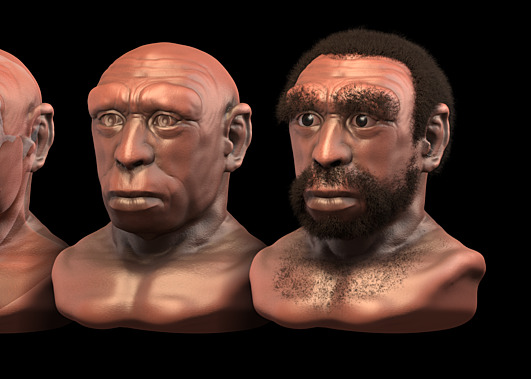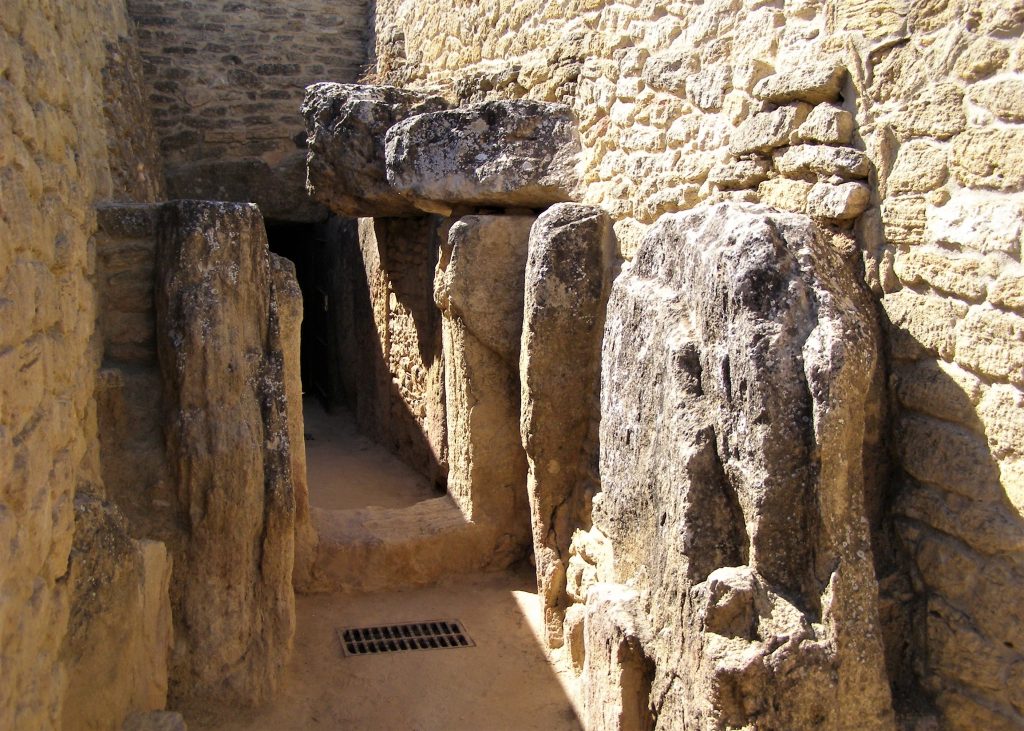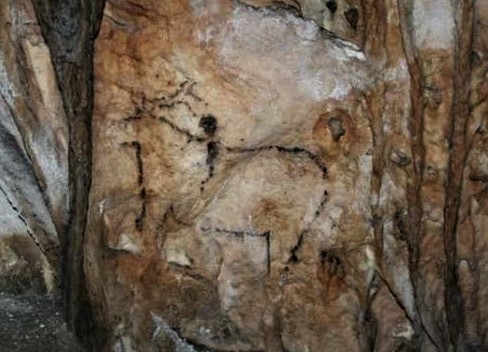To put things into perspective, man has to know about the past. From Roman times to the present day, Spain has played an important role in the progression of the Western World. InSpain.news gives an overview of the history of Spain based on several (scientific) sources. This is part 1.
Prehistory of Spain – Atapuerca and human teeth
In the history of Spain, one location plays a significant role. In 1976, in the hills of Atapuerca in northern Spain, an important archaeological find was made: three human teeth. Excavations eventually yielded 6,700 bones and teeth, belonging to the skeletons of 28 human beings who had hidden there for over 400,000 years under the hills. DNA research showed that the remains belonged to Homo heidelbergensis, the common ancestor of the Neanderthal (Homo sapiens neanderthalensis) and the modern human (Homo sapiens sapiens). The Sierra de Atapuerca is the oldest excavation site of (pre) human remains in the world. Homo heidelbergensis were hunters and lived between 600,000 and 200,000 years ago in Europe and Africa.

Neanderthals
350,000 to 400,000 years ago, Homo heidelbergensis developed the Neanderthal in Europe, and later the modern man in Africa. This breakdown probably had to do with climatic differences between Europe and Africa, especially in the barren ice age. The Neanderthal was more muscular than modern humans but had a larger brain volume. The Neanderthals lived in Europe and the western part of Asia.
About 40,000 years ago, modern humans migrated from Africa into Europe and lived together with the Neanderthals for several thousand years. How peaceful this was, and whether modern humans like so many other species have also been responsible for the extinction of the Neanderthal is not clear. The fact is that 2% of our human DNA is from the Neanderthal. Peaceful or not, both types have at least had contact with each other.
Last Neanderthals in the south of Spain
In the last ice age, the Neanderthals became extinct; climate change certainly played an important role. The last Neanderthals probably lived in southern Spain. Until recently, it was generally assumed that the last Neanderthals died out about 30,000 years ago. However, foundations of Neanderthal tools in Gorham’s cave in Gibraltar showed that they had survived till some 24,000 years ago in southern Spain.
Cave paintings
Homo Sapiens Sapiens, the modern man, has left famous cave paintings from 20,000 years ago. Some well-known examples of these can be found in Spain: in the caves of Altamira (Cantabria, Northern Spain) and those in the Cueva de Ardales (Andalucia). Until recently, it was assumed that the paintings in the kilometers-long caves of Nerja (in the province of Malaga in Andalucia) were made by modern man. The logic being artistic expressions was a matter of course to modern humans. Neanderthals were not considered capable of doing so. Recent carbon dating revealed, however, that these paintings are 43,000 years old and the portraits of seals are therefore likely to be attributed to the Neanderthals. This makes the Nerja cave paintings the oldest discovered in the world, and the only ones produced by Neanderthals.
Neolithic (New Stone Age)
Since approximately 20,000 years ago, Europe, including Spain, was exclusively inhabited by modern humans. About 8,000 years ago, from Mesopotamia and Egypt, the influences of the Neolithic (modern Stone Age) arrived in Spain. It is from around this time that the Dolmenes de Antequera (province of Malaga) date. The megalithic (‘large stones’) tombs are more than 6,000 years old. They have been a UNESCO World Heritage Site since 2016. The role of hunting and gathering, and thus the nomadic existence, decreased in the new stone age. Modern humans dedicated themselves to primitive forms of agriculture and animal husbandry, living in settlements. The earliest remnants of this new way of life, earthenware and machined stones that served as spearhead or ax, came to light predominantly in Almeria. In this area, the oldest walled settlement of Spain was found, more than 4,000 years old.

Dolmen in Antequera
From prehistory to antiquity (3000- 1000 B.C), the development of an Iberian culture
Southern Spain was rich in minerals and ores, in particular copper. Contacts with civilisations from the eastern Mediterranean area, with their knowledge to create bronze from copper and tin, caused Spain to move relatively early from the New Stone Age (neolithic) to the Bronze Age.
The original inhabitants of the Iberian Peninsula were warlike tribal people. The most developed Iberians lived in the South East, where contacts with Greek and Phoenician merchants and settlers, resulted in a form of society that was similar to the Greek.
The growing need for bronze around the Mediterranean made southern Spain (roughly the present Andalucia) an attractive trading partner. Contacts with more developed cultures (the first Cretan Minoans who had contacts with Egypt and Persia) also determined the development of an Iberian culture. In addition, trade settlements established and merged, initially mainly Greeks, with the Iberian population. The city of Malaga might have been a Greek discovery, although no Greek remains have been found.
The Basques
Central and more to the North West of Spain there were more primitive societies that lived mainly from primitive farming and herding. A separate group lived in the Western Pyrenees and the south-western hills, the Basques. The Basques were also a shepherding people and lived in tribal form, with strong family ties. Until the end of Roman times, they lived in relative isolation on the Iberian peninsula. The origin of the Basque people and their language is still unknown. Are the Basques the original, pre-Iberian inhabitants of Iberia, or did the relocate there? In any case, the Basque language shows little relation to any Indo-European language.



